Alaska airport hires ROBOT dog named Aurora to scare wildlife away from busy runway
A headless robot the size of a Labrador Retriever will be camouflaged as a coyote or fox to deter birds and other wildlife at Alaska’s second-largest airport.
The Alaska Department of Transportation and Public Facilities named the new “robot dog” Aurora after the aurora borealis and said it will be stationed at the Fairbanks Airport for “reduction of hazards to wildlife.”
The transportation department posted an Instagram video of the robot climbing rocks, going up stairs and doing something similar to dancing while flashing green lights.
In the video it seemed that Aurora can handle all types of surfaces. The robot dog could be seen climbing stairs and running over rough and other rugged terrain with ease.
In the video the text appeared: ‘Aurora is ready for her first day!’
Aurora, a ‘robot dog’, will be tasked with keeping an Alaska airport free of birds and other wildlife that could pose a threat to aviation in the area
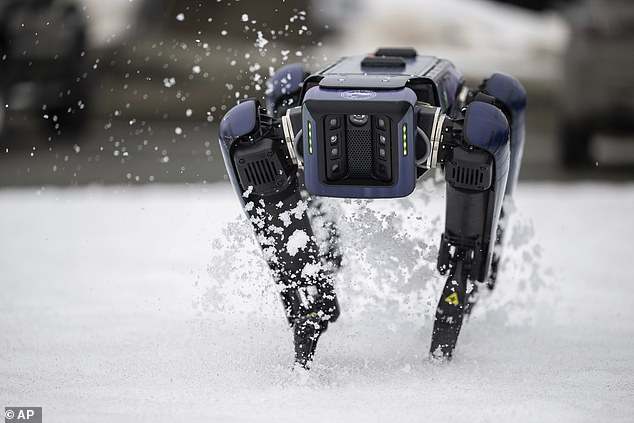
By swapping the panels, the robot can resemble a coyote or a fox
A patch of pink lettering appeared under the robo-pup’s head and said, “Cute face.”
‘Meet Aurora!’ the text shouted. It continued: ‘The new addition to DOT&PF.’ An emoji of a robot and a dog appeared on the screen.
“She’s excited to get started soon!” said the video, which showed the robot running in place with quick and agile movements.
Then the bizarre video said, “She’s our robot dog!” and it showed Aurora sprinting next to a lake.
But the playful subtitles and light-hearted tone of the video did little to minimize how creepy the robot looked. The machine looked fast and agile, and nerve-wrackingly fast.
It shouldn’t be a problem scaring off wildlife, and probably some people, too.
Some viewers expressed their disapproval of the robot in the comments section.
“Please spend our money plowing our roads,” one person wrote.
“How much taxpayer money was spent on this unnecessary abomination?” asked another.
And one viewer simply said: ‘I’m not going to lie. Scary.’
The Instagram caption stated that the robot was outfitted with a variety of vibrant colors meant to evoke images of Alaska’s Northern Lights.
‘Swirls of vibrant colours, ranging from deep indigo to emerald green, dance gracefully across Aurora’s metal frame, perfectly capturing the beauty of the Northern Lights.’
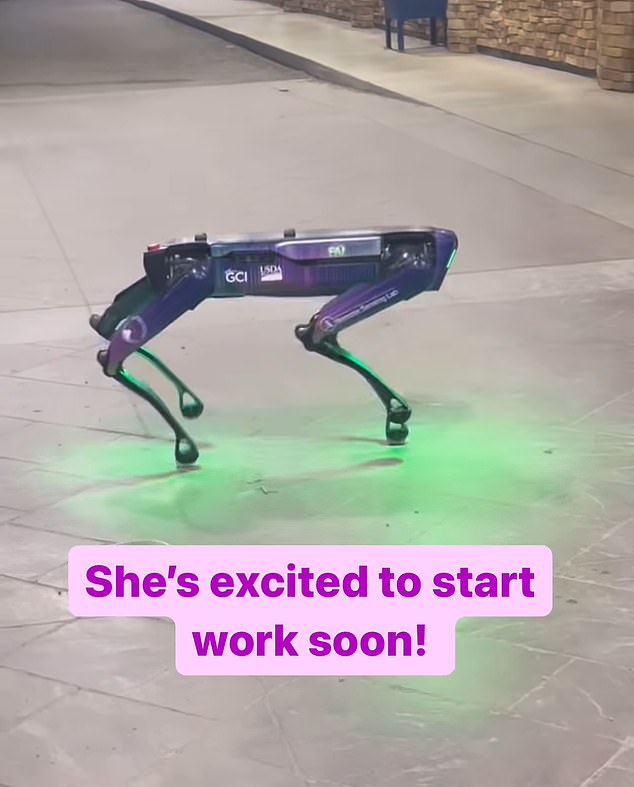
Aurora flashes a green light that is supposed to resemble the aurora borealis, after which the robot is named
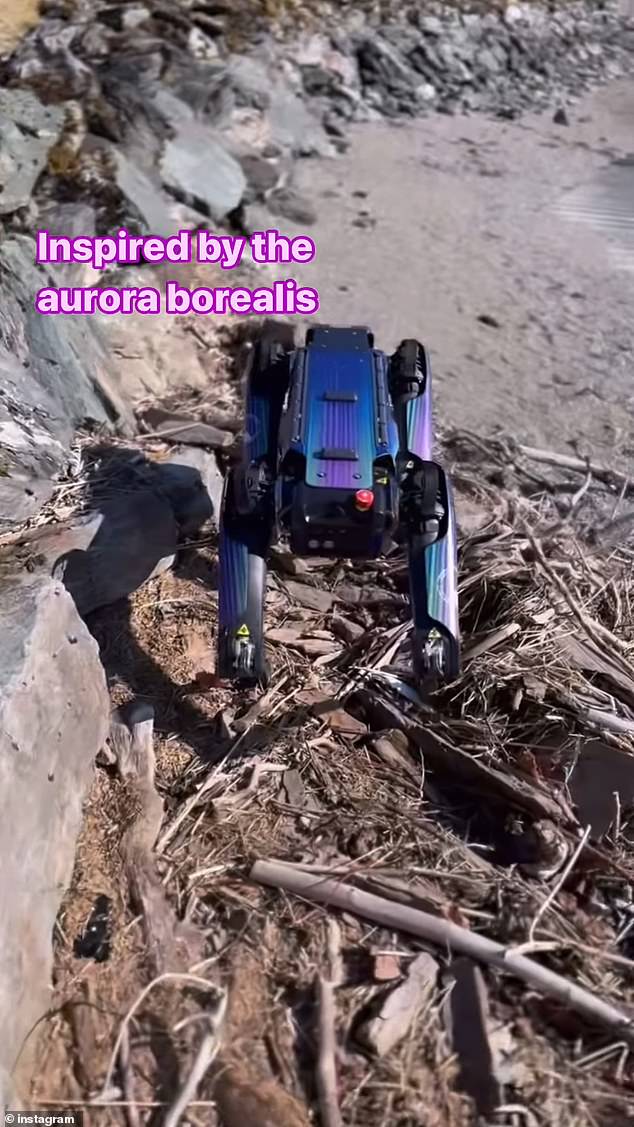
The robot can handle all kinds of surfaces, including rough and rugged terrain
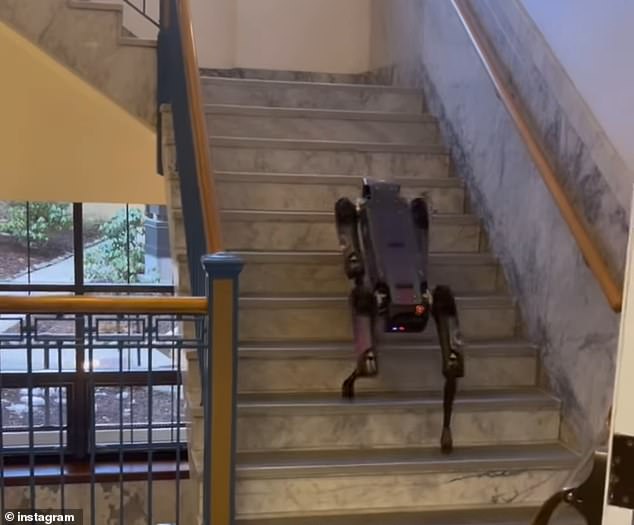
Aurora, unlike many other autonomous robots, can climb stairs with relative ease
Aurora will have to do more than climb stairs this fall when it is tasked with keeping wildlife out of the airport grounds.
Fall marks migratory bird season in Alaska, and Aurora will have to do her best to imitate predator-like movements to keep birds and other wildlife from settling near flat infields.
The plan is to have Aurora patrol an outdoor area near the runway every hour in an effort to prevent harmful encounters between aircraft and wildlife, said Ryan Marlow, program manager with the transportation department.
The robot, which does not use artificial intelligence but other advanced technologies, can be disguised as a coyote or a fox by swapping out replaceable panels.
“The sole purpose of this is to act as a predator and allow us to evoke that response in wildlife without having to use other means,” Marlow told lawmakers last week.
The panels wouldn’t be hyper-realistic, and Marlow said the agency decided not to use animal fur to ensure Aurora remained waterproof.
The idea to use a robot came after officials rejected a plan to use flying drones that would spray a repellent including grape juice.
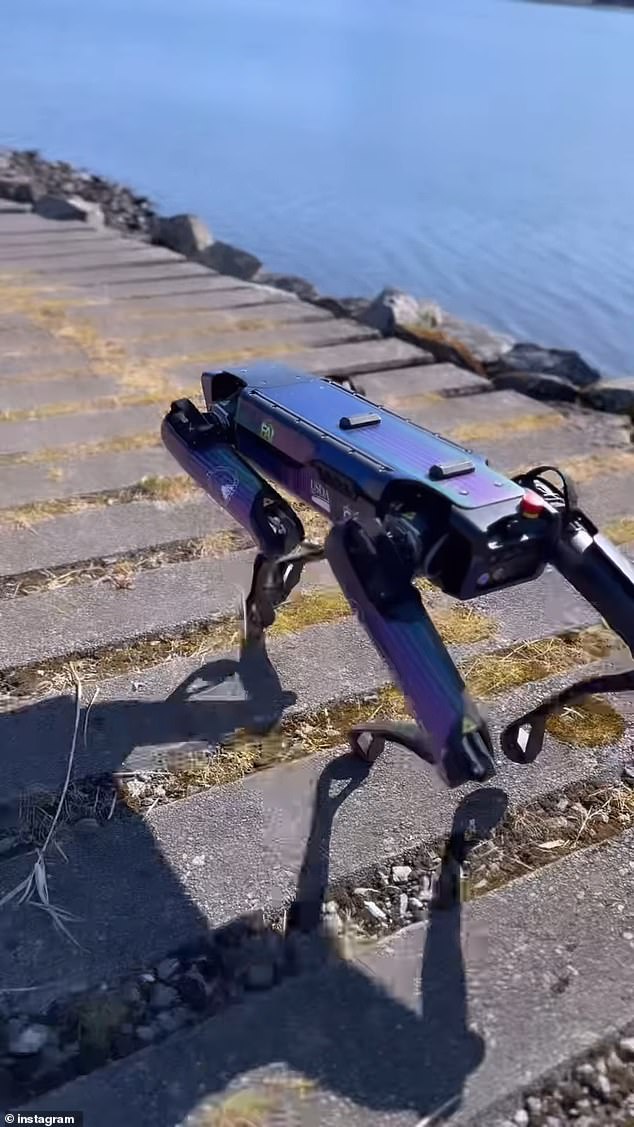
The robot dog is thoroughly waterproof and has been tested in snowy and rainy conditions
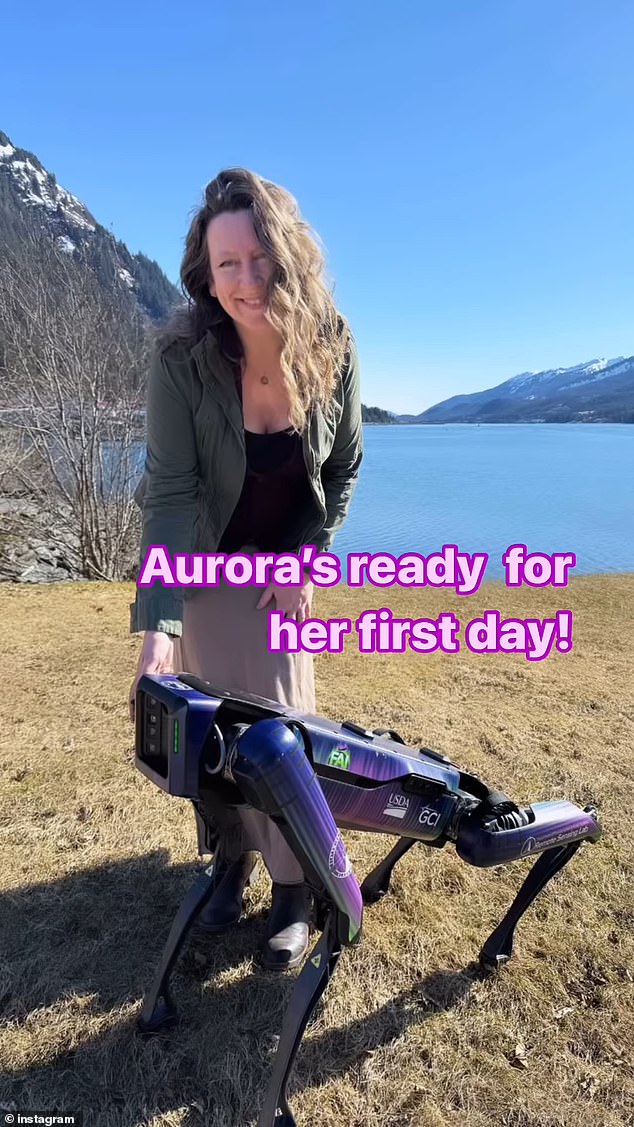
Aurora was designed in-house by Boston Dynamics and its creation was subsidized by a federal grant
Previous other deterrence efforts included officials releasing pigs at a lake near the Anchorage airport in the 1990s, hoping they would eat waterfowl eggs near airplane landing areas.
The test period in Fairbanks will also show how effective the Aurora deterrent would be on larger animals and how moose and bears would respond to the robot, Marlow told the Anchorage newspaper.
Fairbanks’ leads the nation in wildlife mitigation through the use of Aurora. Several airports across the country have implemented robots for various tasks such as cleaning, security patrols and customer service,” agency spokesperson Danielle Tessen said.
In Alaska, wildlife teams are currently being deployed to scare birds and other wildlife away from runways with loud noises, sometimes made with paintball guns.
There were 92 animal strikes near airports in Alaska last year, including 10 in Fairbanks, according to a Federal Aviation Administration database.
Most of the attacks resulted in no damage to the plane, but Marlow said the encounters could be expensive and dangerous in the rare event that a bird gets sucked into an engine and potentially causes a crash.
An AWACS plane crashed in 1995 when it struck a flock of geese, killing 24 people at Elmendorf Air Force Base in Anchorage.
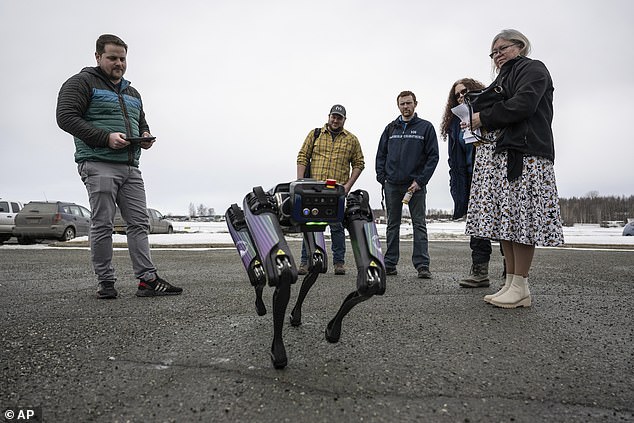
The $70,000 robot can be controlled by a computer or an automated schedule
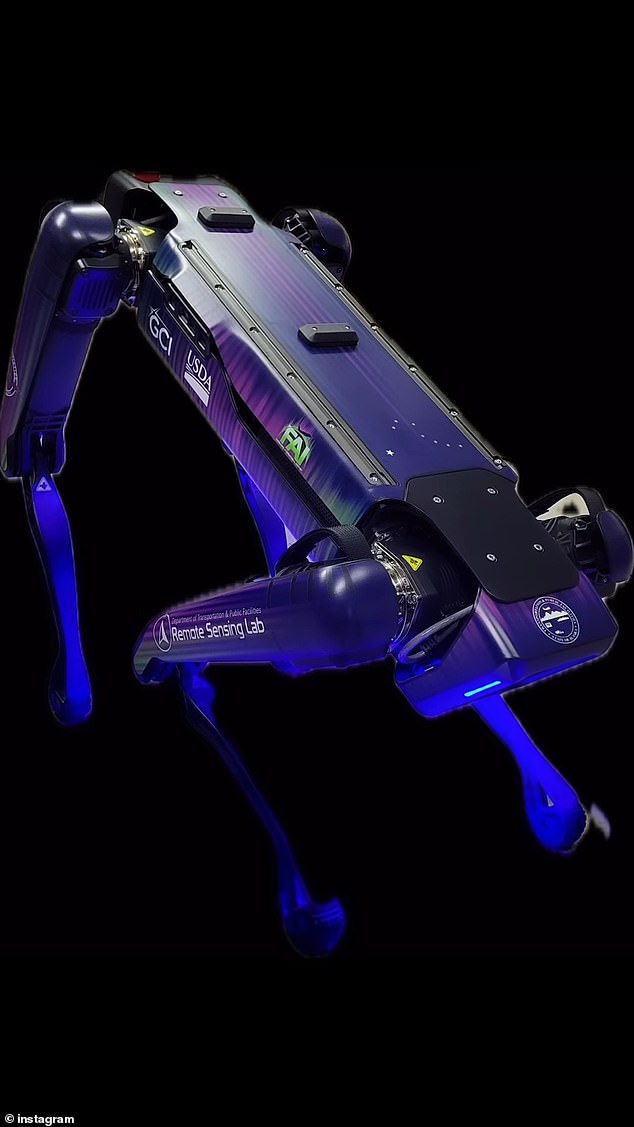
The robot will be put to the test this fall, when it will be tasked with chasing birds from the skies during a migration season.
If the test proves successful, Marlow said the agency could send similar robots to smaller airports in Alaska, which could be more cost-effective than hiring human deterrent teams.
Aurora, which can be controlled from a table, computer or on an automated schedule, will always have a human attendant with it, he said. It can navigate through rain or snow.
At a joint transportation committee meeting, Marlow said he has tested the robot in the water and has not encountered any problems so far.
During the meeting, he engaged Aurora and demonstrated its capabilities to an enthusiastic audience of Alaska officials.
“The balance and capabilities of these systems are quite impressive,” he said.
Using a remote control, Marlow made Aurora run on the spot at high speed and then deftly change direction.
One man tried to push the robot, but Aurora, who was extremely well balanced, stayed upright.
“You see he’s a pretty good show-off,” said Marlow.
The Boston Dynamics robot cost about $70,000 and was paid for with a federal grant.
